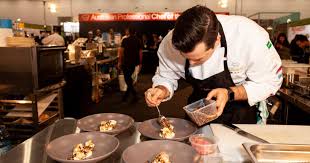The Recurring Battles in the Kitchen
Being at the helm of a bustling kitchen brings a unique set of challenges that every chef in Australia grapples with.
Long and Unsocial Hours
The culinary world is not privy to the luxury of 9 to 5 routines. With extended hours reaching into evenings, weekends, and public holidays, maintaining a healthy work-life balance becomes a challenge for many chefs.
A High-Pressure Environment
Kitchens, especially those in the fast-paced hospitality industry, are high-stress environments. Chefs face the constant pressure of tight deadlines, coupled with the expectation of producing exceptional food consistently, which can be a recipe for stress and burnout.
The Reality of Low Pay
Despite the glamour and allure attached to the culinary world, many chefs, especially those starting out, grapple with low wages. This reality often paints a stark contrast to the richness of the dishes they create.
Job Security and Toxic Work Culture
The hospitality industry is as volatile as it is exciting. Changes in consumer trends, economic downturns, or even a global pandemic can lead to abrupt restaurant closures, leaving chefs jobless overnight. Additionally, the industry has been marred by accusations of toxic work culture, including verbal abuse and bullying.
Skills Gap and Food Sourcing
Australia faces a shortage of qualified chefs, posing a challenge for restaurants struggling to find skilled staff. Additionally, chefs face challenges in sourcing high-quality, local ingredients due to factors like rising food costs and the popularity of organic and sustainable produce.
The Art of Food Presentation and Guest Experience: A Balancing Act
Beyond the general challenges, executive chefs face the uphill battle of balancing guest expectations, the competitive restaurant scene, rapidly changing food trends, and the high cost of doing business.
Australian diners are becoming increasingly discerning, placing a premium on beautifully presented food and exceptional dining experiences. Navigating these expectations, while remaining cost-effective in a fiercely competitive market, can be a daunting task.
Overcoming Challenges: The Stories of Resilience
Ben Shewry: Embracing Indigenous Ingredients Amidst Obstacles
Ben Shewry, the esteemed executive chef and owner of the two Michelin-starred restaurant Attica in Melbourne, is no stranger to the challenges in the culinary scene. Despite having to source the lesser-known native Australian ingredients, Shewry faced difficulties due to their limited availability and the industry's unfamiliarity with them.
Nevertheless, he forged ahead, establishing direct relationships with local foragers and farmers to ensure a consistent supply of high-quality native ingredients. His innovative approach of weaving a story around each dish not only educated his diners but also enhanced their overall dining experience.
His commitment to sustainability and innovative use of indigenous ingredients earned him the title of Australian Chef of the Year by The Age Good Food Guide in 2010.
Dan Hunter: Sourcing Local Produce Amidst Rapidly Changing Food Trends
Dan Hunter, the executive chef and owner of Brae, a two Michelin-starred restaurant in Birregurra, Victoria, had his fair share of challenges. In his commitment to using local, seasonal produce, he was often at the mercy of nature's unpredictability.
With Australia's rapidly changing food trends, keeping his menu innovative and exciting was a continuous challenge. However, Hunter turned these challenges into opportunities by learning to adapt and innovate based on the produce available each season.
His ability to create visually stunning dishes from simple, seasonal ingredients earned him the Australian Chef of the Year by The Age Good Food Guide in 2016.
Conquering the Challenges: Tips for Executive Chefs
Culinary challenges, while daunting, are not insurmountable. Here are some strategies for chefs aspiring to revolutionize the Australian culinary landscape:
- Focus on the Details: Perfecting every aspect of food presentation, from plating to garnish arrangement, is key to making a lasting impression.
- Use High-Quality Ingredients: The quality of ingredients greatly influences the overall presentation and taste of your dishes. Prioritize fresh and flavorful ingredients to wow your guests.
- Be Creative: Experiment with new dishes and presentation ideas. The more unique your offerings, the more you will stand out in the crowded culinary scene.
- Pay Attention to the Customer: A great chef caters not just to the palate but also to the overall dining experience. Exceeding customer expectations goes a long way in building loyalty.
In the face of these challenges, remember that being an executive chef is about more than just cooking—it's about crafting an unforgettable experience for every diner that steps into your restaurant.

